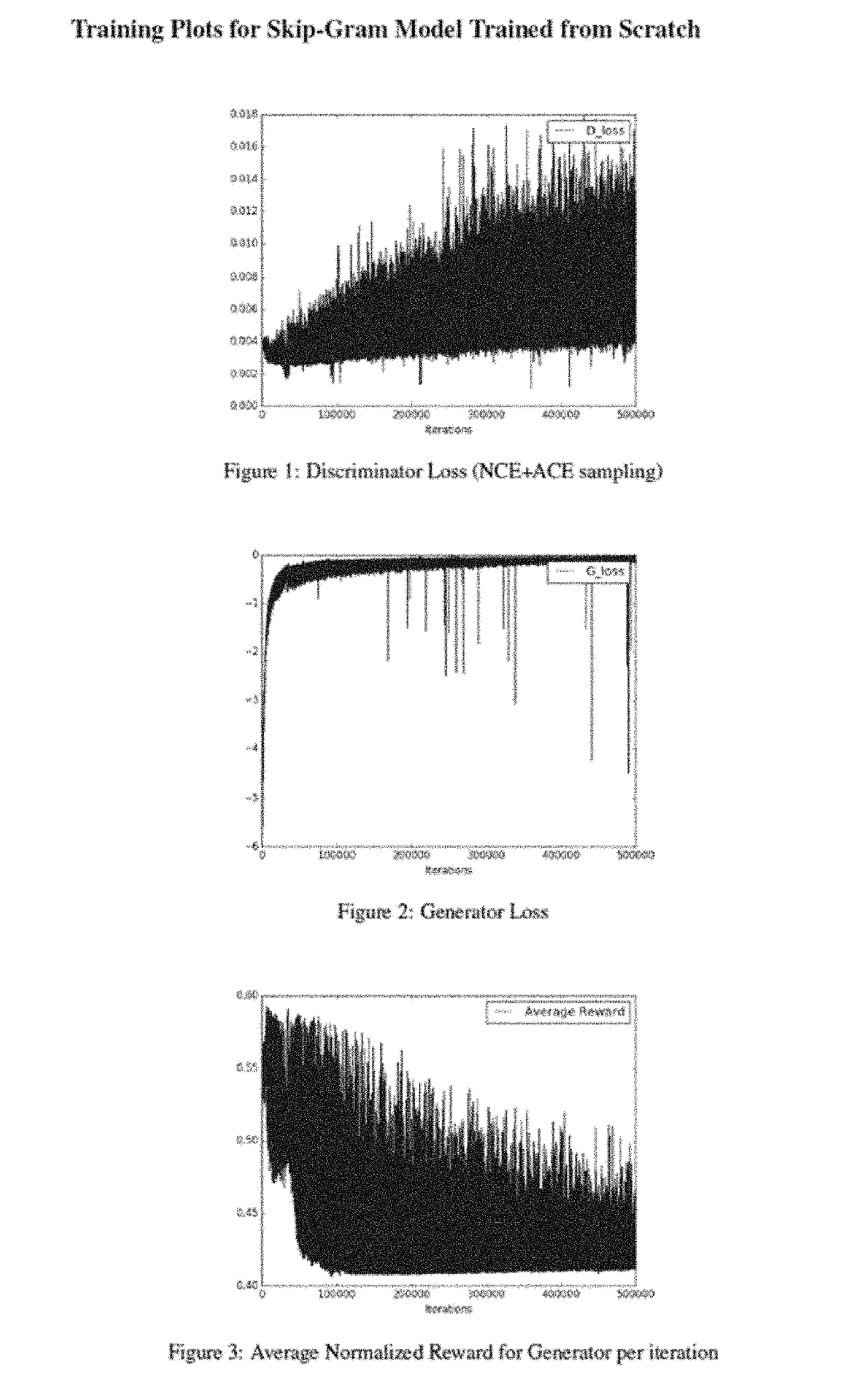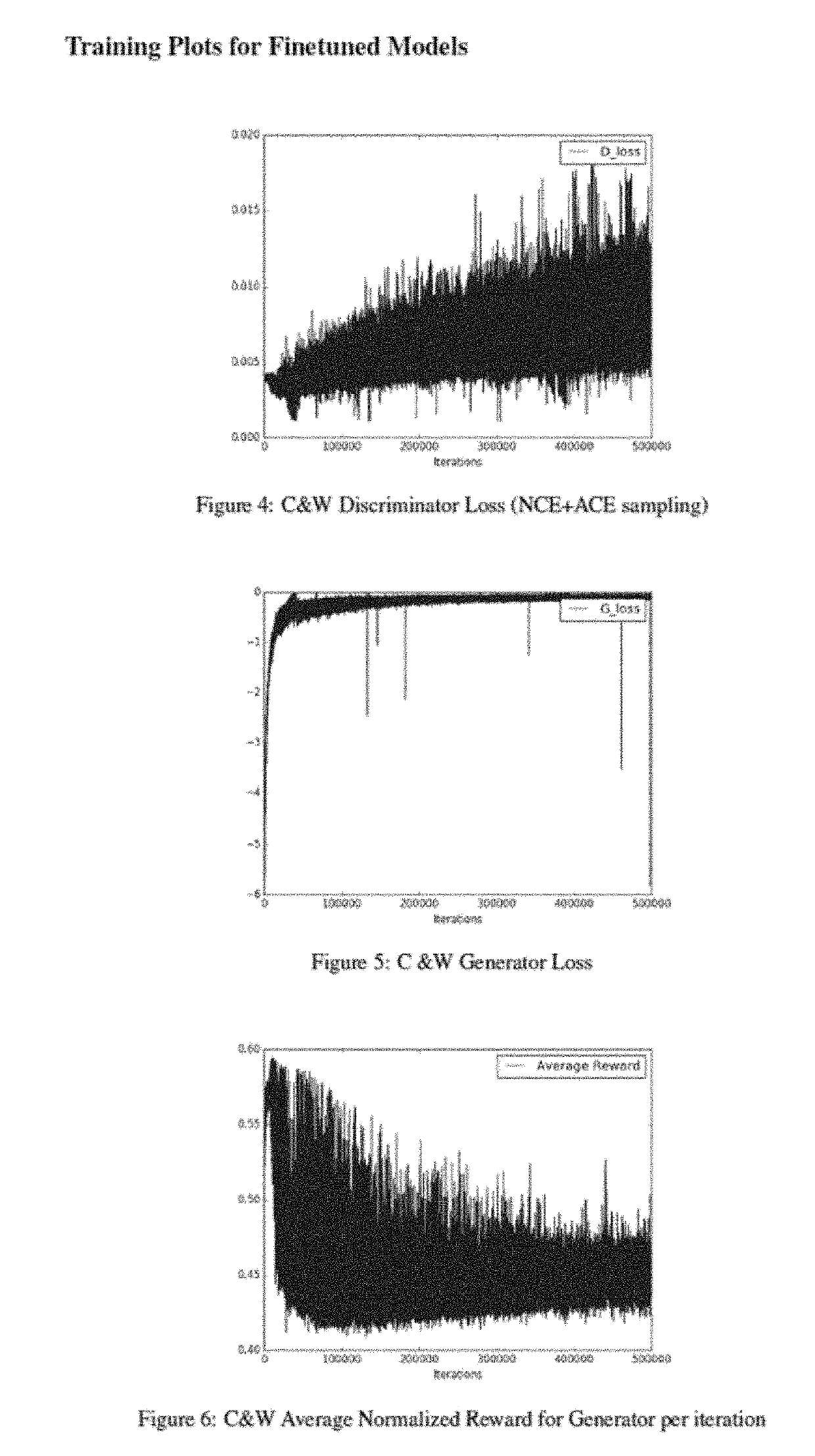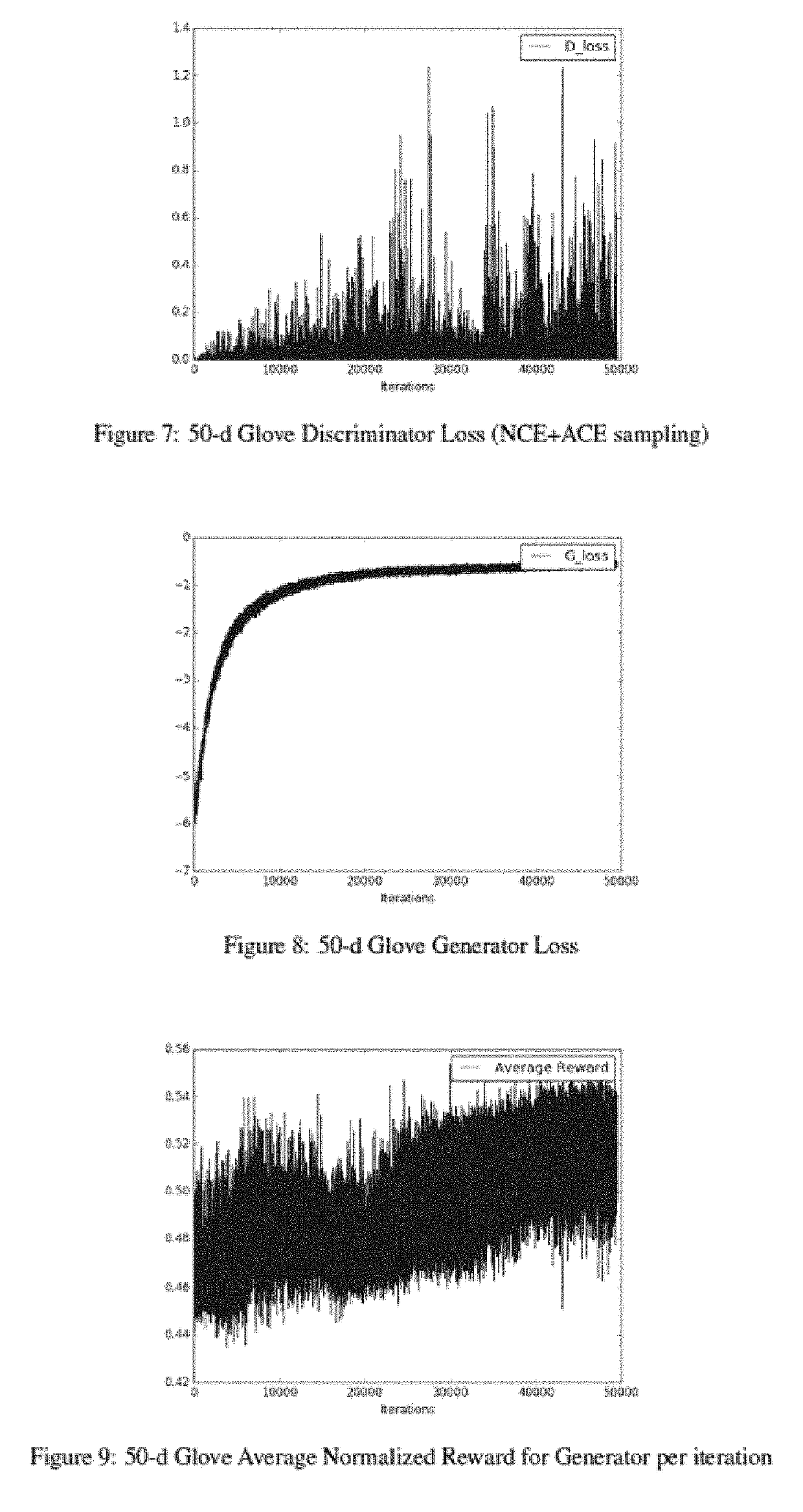Method and device for generative adversarial network training
- Summary
- Abstract
- Description
- Claims
- Application Information
AI Technical Summary
Benefits of technology
Problems solved by technology
Method used
Image
Examples
Embodiment Construction
[0034]Generative adversarial networks (GANs) are a class of neural networks used in unsupervised machine learning. GANs can be implemented by a system of two neural networks contesting with each other in a zero-sum game framework, for example. One network generates candidates (generator) and one network evaluates them (discriminator).
[0035]Generative adversarial networks (GANs) learn by having two neural networks playing a minimax game where a discriminator, D, tries to tell apart samples generated by a generator, G, from real data. In some embodiments, example architectures described herein may apply the adversarial principle to supervised contrastive learning scenarios. Instead of generating negative examples from noise, example architectures may adversarially learn a conditional sampling distribution over observed output data to form negative (unobserved) input-output pairs.
[0036]Contrastive learning approaches include maximum margin estimation used for SVM (support vector machin...
PUM
 Login to View More
Login to View More Abstract
Description
Claims
Application Information
 Login to View More
Login to View More - R&D
- Intellectual Property
- Life Sciences
- Materials
- Tech Scout
- Unparalleled Data Quality
- Higher Quality Content
- 60% Fewer Hallucinations
Browse by: Latest US Patents, China's latest patents, Technical Efficacy Thesaurus, Application Domain, Technology Topic, Popular Technical Reports.
© 2025 PatSnap. All rights reserved.Legal|Privacy policy|Modern Slavery Act Transparency Statement|Sitemap|About US| Contact US: help@patsnap.com



